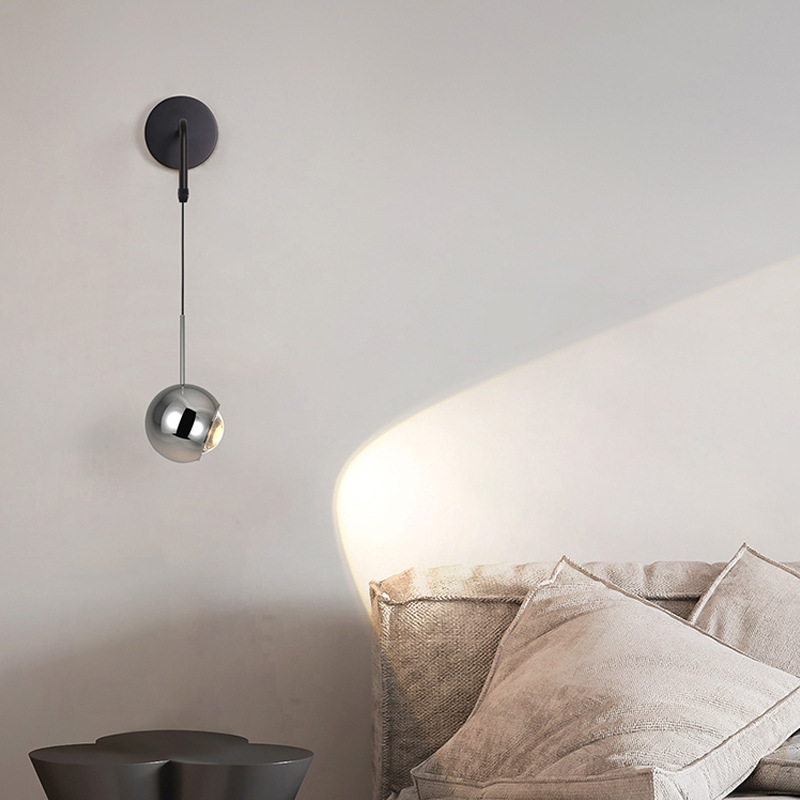When it comes to creating a comfortable and inviting home, lighting Omelighting plays a crucial role. It has the power to transform a space, enhance its aesthetic, and set the mood for any occasion. Whether you’re looking to create a cozy atmosphere for a relaxing evening or brighten up a room for a lively gathering, the right lighting can make all the difference.
Lighting is not just about functionality; it is also an essential element of home decor. It can highlight architectural features, artwork, and furniture, adding depth and dimension to your space. By carefully selecting and placing lighting fixtures, you can create a visually appealing and harmonious environment that reflects your personal style.
Choosing the Right Lighting Fixtures for Your Home
When it comes to choosing lighting fixtures for your home, there are several factors to consider. First and foremost, you need to think about the purpose of the lighting. Are you looking for ambient lighting to create a warm and inviting atmosphere? Or do you need task lighting to enhance functionality in specific areas of your home? Understanding the purpose of the lighting will help you determine the type of fixtures you need.
There are various types of lighting fixtures available, each serving a different purpose. Chandeliers and pendant lights are perfect for adding drama and elegance to a room, while recessed lights provide a clean and modern look. Table lamps and floor lamps are versatile options that can be moved around as needed. Wall sconces can be used to create a soft and indirect light source. By combining different types of fixtures, you can create layers of light that add depth and interest to your space.
Ambient Lighting: Creating a Warm and Inviting Atmosphere
Ambient lighting is the foundation of any well-designed lighting scheme. It provides overall illumination and sets the mood in a room. Whether you’re hosting a dinner party or enjoying a quiet evening at home, ambient lighting can create a warm and inviting atmosphere.
To create ambient lighting in your home, consider using a combination of fixtures such as chandeliers, pendant lights, and recessed lights. Chandeliers are perfect for dining rooms and entryways, while pendant lights can be used in kitchens and living rooms. Recessed lights are a great option for providing general illumination throughout a space.
In addition to selecting the right fixtures, it’s important to consider the placement and intensity of the light. Soft, warm light is ideal for creating a cozy atmosphere, while brighter light can make a space feel more energetic. Dimmer switches are a great investment as they allow you to adjust the intensity of the light to suit your needs.
Task Lighting: Enhancing Functionality in Your Home
Task lighting is essential in specific areas of your home where you need focused illumination for activities such as reading, cooking, or working. It helps enhance functionality and prevents eye strain by providing adequate light for the task at hand.
In the kitchen, under-cabinet lighting is a popular choice for illuminating countertops and workspaces. Pendant lights or track lighting can be used over kitchen islands or dining tables to provide focused light for meal preparation or dining. In the living room, floor lamps or table lamps can be used to provide task lighting for reading or working on a laptop.
When selecting task lighting fixtures, it’s important to consider the direction and intensity of the light. Adjustable fixtures such as swing-arm lamps or desk lamps are ideal as they allow you to direct the light exactly where you need it. LED bulbs are also a great option for task lighting as they provide bright, focused light while consuming less energy.
Accent Lighting: Highlighting Your Home’s Best Features
Accent lighting is all about drawing attention to unique features in your home such as artwork, architectural details, or decorative objects. It adds drama and visual interest to a space, creating focal points and highlighting the things you love.
There are various ways to incorporate accent lighting into your home. Track lighting or picture lights can be used to highlight artwork or photographs on the walls. Recessed lights or spotlights can be used to accentuate architectural features such as columns or archways. In the bathroom, vanity lights can be used to highlight the mirror and create a flattering light for grooming.
When it comes to accent lighting, it’s important to strike a balance between the intensity of the light and the object you’re highlighting. The light should be bright enough to draw attention but not overpowering. It’s also important to consider the color temperature of the light. Warm white light is generally more flattering and creates a cozy atmosphere, while cool white light is more energizing and creates a modern look.
Energy-Efficient Lighting: Saving Money and the Environment

In today’s world, energy efficiency is a top priority for many homeowners. Not only does it help save money on utility bills, but it also reduces our carbon footprint and helps protect the environment. Fortunately, there are plenty of energy-efficient lighting options available that can help you achieve both goals.
LED (light-emitting diode) bulbs are one of the most energy-efficient lighting options on the market. They consume up to 80% less energy than traditional incandescent bulbs and last up to 25 times longer. LED bulbs are available in a variety of shapes, sizes, and color temperatures, making them suitable for any room in your home.
Another energy-efficient option is compact fluorescent lamps (CFLs). They use about 75% less energy than incandescent bulbs and last up to 10 times longer. CFLs are available in different color temperatures and can be used in a variety of fixtures.
When shopping for energy-efficient lighting, look for bulbs with the ENERGY STAR label. These bulbs meet strict energy efficiency guidelines set by the U.S. Environmental Protection Agency and can help you save even more on your energy bills.
Smart Lighting: Control Your Lights with Technology
Smart lighting is revolutionizing the way we control and interact with our lights. With the help of technology, you can now control your lights from anywhere in the world using your smartphone or voice commands. Smart lighting systems offer a wide range of features that can make your life easier and more convenient.
One of the main advantages of smart lighting is the ability to control your lights remotely. Whether you’re away on vacation or simply forgot to turn off the lights before leaving the house, you can easily control them using a smartphone app. Some smart lighting systems also offer scheduling options, allowing you to program your lights to turn on and off at specific times.
Voice control is another popular feature of smart lighting systems. With the help of virtual assistants such as Amazon Alexa or Google Assistant, you can control your lights using simple voice commands. This hands-free control is not only convenient but also adds a touch of luxury to your home.
Creative Lighting Ideas for Unique Home Decor
If you’re looking to add a touch of creativity and personality to your home decor, there are plenty of unconventional lighting fixtures and ideas to choose from. These unique fixtures can become a focal point in your space and make a statement about your personal style.
One creative lighting idea is to use string lights or fairy lights to create a whimsical and magical atmosphere. You can hang them on walls, drape them over furniture, or wrap them around objects to create a soft and enchanting glow.
Another creative option is to use unconventional materials for your lighting fixtures. For example, you can repurpose old wine bottles or mason jars into pendant lights by adding a light bulb and a cord kit. This DIY project not only adds a personalized touch to your space but also helps reduce waste.
If you’re feeling adventurous, you can also experiment with different colors and patterns. Colored light bulbs or lampshades can add a playful and vibrant touch to your space. You can also use patterned lampshades or light filters to create interesting shadows and textures.
Lighting for Different Rooms: Tips and Tricks
Each room in your home has different lighting needs and requirements. By understanding these needs and selecting the right lighting fixtures, you can create a well-lit and functional space that suits your lifestyle.
In the living room, a combination of ambient, task, and accent lighting is essential. Start with a central chandelier or pendant light for ambient lighting, then add floor lamps or table lamps for task lighting. Use wall sconces or picture lights to highlight artwork or architectural features.
In the kitchen, bright and focused lighting is key. Install recessed lights or track lighting to provide general illumination, then add under-cabinet lighting for task lighting. Pendant lights or a chandelier over the kitchen island can provide additional task lighting and add visual interest.
In the bedroom, a combination of ambient and task lighting is important. Install a central ceiling light or a chandelier for ambient lighting, then add bedside table lamps or wall sconces for task lighting. Dimmer switches are a great addition as they allow you to adjust the intensity of the light to create a relaxing atmosphere.
Maintenance and Care for Your Home Lighting Fixtures
To keep your lighting fixtures in good condition and ensure they provide optimal performance, regular maintenance and care are essential.
First and foremost, it’s important to clean your lighting fixtures regularly to remove dust and dirt buildup. Use a soft cloth or duster to gently wipe down the fixtures. Avoid using abrasive cleaners or harsh chemicals as they can damage the finish.
For glass fixtures such as chandeliers or pendant lights, you can use a glass cleaner to remove fingerprints and smudges. Be sure to follow the manufacturer’s instructions and use a non-abrasive cleaner.
If your lighting fixtures have removable parts such as lampshades or glass covers, you can wash them with warm soapy water. Be sure to dry them thoroughly before reattaching them to the fixture.
In addition to cleaning, it’s important to check the bulbs regularly and replace them as needed. Burnt-out bulbs not only affect the performance of the fixture but also reduce its lifespan.
Conclusion: The importance of lighting in creating a comfortable and inviting home, and how choosing the right lighting fixtures can enhance the overall aesthetic of your space.
In conclusion, lighting is a powerful tool that can transform your home and create a comfortable and inviting atmosphere. By carefully selecting and placing lighting fixtures, you can enhance the overall aesthetic of your space and create a visually appealing environment that reflects your personal style.
When choosing lighting fixtures for your home, consider factors such as the purpose of the lighting, the type of fixture, and the placement and intensity of the light. Ambient lighting sets the mood in a room, task lighting enhances functionality, and accent lighting highlights unique features. Energy-efficient and smart lighting options are not only environmentally friendly but also offer convenience and control.
Get creative with your lighting by incorporating unconventional fixtures or DIY projects. Consider the specific lighting needs of each room in your home and select fixtures accordingly. Finally, don’t forget to properly maintain and care for your lighting fixtures to ensure optimal performance and longevity.
By paying attention to these aspects of lighting in your home decor, you can create a space that is not only visually appealing but also functional and inviting. So go ahead, let there be light!




